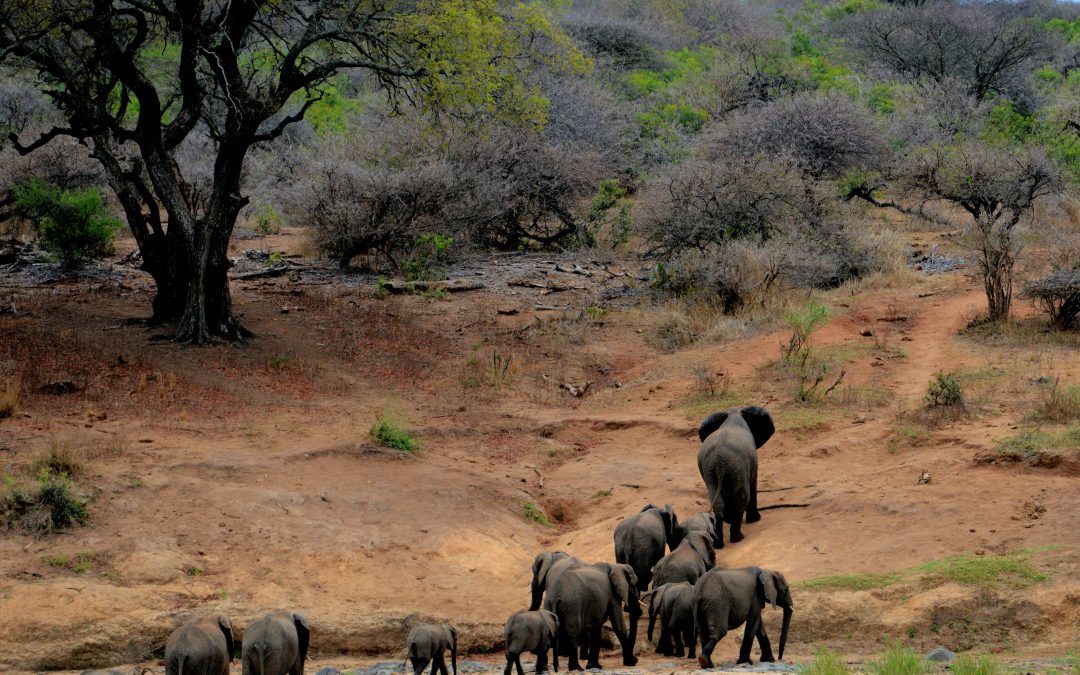Dhows slip past reefs the color of tourmaline; seaweed farmers tie new lines at Jambiani as the tide turns. The islands of Zanzibar are gorgeous—but also changing hands‑on: smarter entry controls, a firm push for conservation finance, and clear expectations for visitors. This guide is the practical, 2025‑accurate playbook to get in smoothly, travel ethically, and leave a lighter wake.

ZANZIBAR

ZANZIBAR — The Smart Guide
Dhows slip past reefs the color of tourmaline; seaweed farmers tie new lines at Jambiani as the tide turns. The islands of Zanzibar are gorgeous—but also changing hands‑on: smarter entry controls, a firm push for conservation finance, and clear expectations for visitors. This guide is the practical, 2025‑accurate playbook to get in smoothly, travel ethically, and leave a lighter wake.
1) 2025 at a Glance — What Changed Since Last Season
- Apply online first: Tanzania’s official e‑Visa portal covers both mainland & Zanzibar. You apply, pay, and track status online; approval arrives by email. The portal is active in 2025 (version 2024.4.1). [visa.immig…tion.go.tz]
- Visa‑on‑arrival rumors vs. reality: In late‑2024 there was confusion about a looming suspension of VOA. Several foreign ministries signalled a January 30, 2025 switch‑off; Tanzanian authorities encouraged e‑Visa but hadn’t formally abolished VOA at that time. Bottom line: apply e‑Visa before you fly to avoid airport uncertainty and queues. [visasnews.com], [visa-navigator.com]
- Zanzibar mandatory inbound travel insurance (new): Since 1 Oct 2024, all foreign non‑residents entering Zanzibar must carry a ZIC policy purchased via the official Visit Zanzibar portal. A QR‑coded certificate is checked on arrival; provision exists to pay on arrival only if your country blocks online payment. Expect a ~US$44 92‑day policy; bring proof. [tz.usembassy.gov], [inbound.vi…ibar.go.tz], [senseofafrica.com], [tuliazanzibar.com]
- Conservation & blue economy ramp‑up: Zanzibar is scaling Marine Protected Areas (MPAs) financing (e.g., PECCA – Pemba Channel Conservation Area) via impact investments in sustainable aquaculture and eco‑tourism; the EU launched a €11 m coastal program in April 2025; a national coral reef action plan was announced July 2025. Expect more operator standards and enforcement on the water. [icriforum.org], [tanzaniainvest.com], [furtherafrica.com]
2) Entry Essentials — Visas, Health, and the One‑Island Policy
2.1 Visa types & what to choose
- Ordinary (Single‑Entry) e‑Visa — default for tourism; up to 90 days, US$50 for most nationalities; covers both mainland and Zanzibar (you don’t need a second visa for the islands). Apply at the government site and carry your printout. [immigration.go.tz], [visa.immig…tion.go.tz]
- Multiple‑Entry Visa — for frequent in/out (e.g., regional hops); validity up to 12 months with each stay ≤90 days. U.S. travelers commonly receive a 1‑year multiple entry (policy/bilateral practice). [immigration.go.tz]
- Transit (≤7 days) and Business (≤90 days) visas exist; check documentation needs (invitation letters, onward tickets, etc.). [un.tzembassy.go.tz]
Pro move: Submit your e‑Visa at least 2–3 weeks ahead. Even when VOA is technically possible, immigration has repeatedly urged e‑Visa to ease congestion; third‑party “e‑visa” agents exist—use the official .go.tz portal. [visasnews.com], [visa.immig…tion.go.tz]
2.2 Zanzibar’s mandatory inbound travel insurance
- Who must buy? All foreign non‑residents arriving by seaport or airport into Zanzibar. Policy is issued only by Zanzibar Insurance Corporation (ZIC), valid up to 92 days; present the QR‑coded certificate on arrival. [us.tzembassy.go.tz], [inbound.vi…ibar.go.tz]
- Payment & exceptions: Apply before travel online; if your country restricts online payments or you had a system issue, you may apply/pay on arrival, per Government notice (carry screenshots). [senseofafrica.com]
- Price guidance: Lodges and local advisories quote about US$44 for up to three months; confirm on the official portal. [tuliazanzibar.com]
- Source docs & alerts: See the U.S. Embassy alert (Sept 27, 2024) and the official advisory PDF. [tz.usembassy.gov], [us.tzembassy.go.tz]
2.3 Health: Yellow fever & standard travel vaccines
- Yellow fever certificate required if arriving from (or transiting ≥12 hours through) an endemic country; not required for direct arrivals from non‑risk countries. Tanzania’s Ministry of Health lists the policy and affected countries; CDC echoes the same. Get vaccinated ≥10 days before entry. [moh.go.tz], [wwwnc.cdc.gov]
- Routine travel vaccines (Hep A/B, Typhoid, etc.) remain recommended; check CDC’s “Traveler View.” [wwwnc.cdc.gov]
3) Fees & Local Taxes — What You’ll Actually Pay
- Hotel/Bed levy: Zanzibar levies per‑person, per‑night hotel levies (bands vary by rate class under Zanzibar’s Hotel Levy framework). Some sources cite flat US$5 pppn at budget tiers; higher‑tier stays may be levied as a percentage. Confirm with your hotel whether the levy is included or charged at checkout. [zanrevenue.org], [iamtourist.org]
- Airport/port charges: Zanzibar collects Airport/Port Service Charges; for seaports, schedules specify US$10 for international departures (air schedules can be amended by the Minister and are often included in tickets—check your fare breakdown). [zanrevenue.org]
- Insurance (ZIC): As above, budget ~US$44 for up to 92 days, purchased via inbound.visitzanzibar.go.tz. [inbound.vi…ibar.go.tz]
Tip: Many international tickets already include airport taxes; local seaport/airport fees may still be collected separately in specific circumstances—ask your carrier; Zanzibar Revenue Authority publishes charge categories. [zanrevenue.org]
4) Blue‑Economy 101 — Why Ocean Etiquette Is Non‑Negotiable in 2025
Zanzibar has a formal Blue Economy Policy (2022) prioritizing sustainable fisheries, aquaculture, eco‑tourism, ports, and marine conservation. In 2025 it backed this with coral‑reef action planning, EU‑funded coastal projects, and impact‑investment pilots in PECCA (Pemba). This means more codes of conduct on water, support for reef‑positive businesses, and community‑first models—especially for women and coastal households. [blueeconomysmz.go.tz], [furtherafrica.com], [tanzaniainvest.com], [mptf.undp.org]
What that means for you: choose licensed, conservation‑aligned operators; expect briefings, caps on group sizes, no‑touch rules, and distance limits with wildlife. Your spend helps finance MPAs—if you pick the right outfit. [icriforum.org]
5) Ethical Marine Experiences — Exactly How to Do Them Right
5.1 Mnemba Atoll (north‑east of Unguja): snorkeling & shallow reefs
- Go with operators that brief on reef‑safe sunscreen, buoyancy control, and no standing on coral; ask if they align with Green Fins practices (widely used as a standard library of codes for marine tourism). [zanzibarwildlife.com]
5.2 Kizimkazi dolphin trips (south) — Read this before you book
In 2024/25 local guidelines tightened: minimum approach distances, slow‑speed zones, and no chasing pods. Ethical tours aim for ≤6 swimmers at a time, ≤10–15 minutes in water per rotation, and a hands‑off policy—dolphins approach you, not vice‑versa. If a boat “leapfrogs” and cuts off pods, that’s a red flag. [zanzibarwildlife.com], [cristalres…nzibar.com]
- When to go: Dawn departures give calmer seas and less traffic; June–Sept often brings smooth water and strong sightings. [cristalres…nzibar.com]
- Local rule sources: The Government of Zanzibar has published dolphin‑tourism guidelines (English & Swahili) disseminated via marine‑NGO channels; ask your captain to confirm they follow them. [zanzibarwildlife.com]
5.3 PECCA (Pemba Channel Conservation Area) — diving with purpose
PECCA is the focus of new impact finance—community sea‑cucumber aquaculture and conservation‑led eco‑tourism designed to fund MPA management and restore habitats. If you’re heading to Pemba, seek operators linked into Blue Alliance or similar initiatives that reinvest in reef monitoring/enforcement. [icriforum.org]
Wildlife code (short list):
– No touching/feeding dolphins, turtles or starfish; leave echinoderms submerged.
– Keep ≥50 m from dolphin pods unless they initiate closer approach; idle speed only.
– Small groups; rotate water time; no drones over wildlife without permits. [zanzibarwildlife.com] [lappetface…afaris.com]
6) Stone Town, Spice, Tides & Seasons — Trip Engineering that Works
6.1 Best seasons (Unguja & Pemba)
- Dry & sunny: Jun–Oct (cooler, great for marine trips; calmer seas for Kizimkazi). [cristalres…nzibar.com]
- Short rains: Nov–Dec (lush, still workable).
- Hot & calm: Dec–Mar (good underwater visibility; book early for festive).
- Long rains: Apr–May (budget‑friendly; some trips restricted by weather).
6.2 Stone Town (UNESCO core) — the smart route
- Morning walking loop: House of Wonders façade (exterior), Old Fort, Forodhani, spice market, doors trail; modest dress beyond beach zones is appreciated.
- Afternoons: spice farm visit; Prison (Changuu) Island for history and Aldabra tortoises (ethical handling only; follow keeper guidance).
- Golden hour: Forodhani food market—start with sugarcane juice; choose stalls with high turnover.
7) Itineraries (Ethical & Efficient)
A) Long weekend (4 days) — Unguja coast + Stone Town
- Day 1: Arrive ZNZ → coast check‑in; sunset dhow.
- Day 2: Mnemba snorkel with reef briefing; slow afternoon.
- Day 3: Kizimkazi dolphins at first light with an operator that follows distance/time caps; lunch in Jambiani; seaweed women’s coop visit (learn about climate impacts & women’s roles in the blue economy). [ippmedia.com]
- Day 4: Stone Town classic loop → fly out.
B) 7 days — Pemba & PECCA focus
- Day 1–2: Fly to Pemba; reef check dive; community visit tied to sea‑cucumber aquaculture pilot. [icriforum.org]
- Day 3–4: PECCA sites with a conservation‑linked operator; night mangrove boardwalk.
- Day 5–7: Back to Unguja; Mnemba or Chumbe Island Coral Park day.
C) Two‑center safari + beach (10–12 days)
- Days 1–6: Mainland safari (Serengeti/Ngorongoro);
- Days 7–12: Zanzibar for coast, Stone Town, and Kizimkazi (ethical).
8) Money, Transport, and The New Admin Bits
- Cards & cash: USD widely accepted; newer bills preferred. Expect levies/service charges at hotels; some shops are cash only outside resorts. (Resorts often note USD after 2009 only.) [zanziresort.com]
- IC flights & ferries: Book reputable ferries; rough seas in long‑rains; check insurance coverage.
- IC taxes in tickets: Many airport taxes are factored into fares; port fees may be separate (see ZRA schedules). [zanrevenue.org]
- Connectivity: eSIMs work well near Stone Town/coasts; remote Pemba may be patchier.
9) Responsible Culture & Community
- Dress codes: Beachwear on beaches; cover shoulders/knees in Stone Town & villages.
- Ramadan & Fridays: Check opening times; be extra considerate with photography.
- Tipping: Guides/boat crews appreciate tips (small USD/TZS).
10) Traveler Checklist
Before you go
- ✅ e‑Visa approved & printed (visa.immigration.go.tz) — even if VOA exists, this is safest. [visa.immig…tion.go.tz]
- ✅ Zanzibar insurance bought at inbound.visitzanzibar.go.tz; certificate with QR code saved offline. [inbound.vi…ibar.go.tz]
- ✅ Yellow fever: certificate if arriving from/transiting ≥12 h through endemic country; not needed if flying direct from non‑risk countries. [moh.go.tz], [wwwnc.cdc.gov]
- ✅ Reef‑safe sunscreen, mask/snorkel if you prefer your own, dry bag, modest cover‑ups.
- ✅ Operator vetting: pick dolphin/reef tours that follow official guidelines and Green‑Fins‑style practices. [zanzibarwildlife.com]
On arrival
- ✅ Present passport (6+ months), e‑Visa, ZIC insurance QR, and (if applicable) YF card. [inbound.vi…ibar.go.tz], [wwwnc.cdc.gov]
- ✅ Ask at hotel: Is the hotel levy included? If not, know the per‑night amount. [zanrevenue.org]
On the water
- ✅ No chase, no touch, no feed. ≤6 in water, ≤10–15 min per rotation. ≥50 m from pods unless they approach. [cristalres…nzibar.com], [lappetface…afaris.com]
- ✅ Don’t lift starfish; leave them submerged. [zanzibarwildlife.com]
11) FAQ
Is Zanzibar a separate visa from Tanzania?
No. One Tanzania visa covers both mainland and Zanzibar. Apply online at the official e‑Visa portal; single‑entry tourist visas are up to 90 days. [visa.immig…tion.go.tz], [immigration.go.tz]
Do I need to buy Zanzibar’s insurance if I already have great travel insurance?
Yes. Since Oct 1, 2024, Zanzibar requires inbound travel insurance purchased from ZIC for all foreign non‑residents, checked by QR at entry. Your personal policy is great—but ZIC’s is mandatory. [inbound.vi…ibar.go.tz], [us.tzembassy.go.tz]
Is visa‑on‑arrival still possible?
There was mixed messaging in late 2024 about VOA’s future; some governments stated VOA would end in early 2025, while Tanzania emphasized e‑Visa without publishing a permanent VOA suspension on official channels. To avoid uncertainty and queues, apply e‑Visa. [visasnews.com]
Yellow fever—do I need it?
Only if you arrive from an endemic country or have a ≥12‑hour transit there. Direct arrivals from non‑risk countries don’t need it. Carry your ICVP if applicable; policy is published by Tanzania’s Ministry of Health and referenced by CDC. [moh.go.tz], [wwwnc.cdc.gov]
What are the hotel taxes?
Zanzibar levies bed/hotel levies (flat or percentage based on rate tiers). Many hotels charge per‑person‑per‑night at checkout; higher categories may be percentage‑based under the Hotel Levy schedules. Confirm with your property. [zanrevenue.org]
Can I swim with dolphins?
Yes—but ethically. Choose guides that follow official distance/speed rules, cap group size/time in water, and never chase or feed. Dawn trips reduce boat pressure and offer calmer seas. [zanzibarwildlife.com], [cristalres…nzibar.com]
What’s new with conservation?
Zanzibar is scaling a blue‑economy approach: PECCA financing, €11 m EU marine project, and a national coral reef action plan launched July 2025. Expect rising standards for operators and visitor behavior. [icriforum.org], [tanzaniainvest.com], [furtherafrica.com]

Written by Kariss
More From This Category

ZANZIBAR

ZANZIBAR
Dhows slip past reefs the color of tourmaline; seaweed farmers tie new lines at Jambiani as the tide turns. The islands of Zanzibar are gorgeous—but also changing hands‑on: smarter entry controls, a firm push for conservation finance, and clear expectations for visitors. This guide is the practical, 2025‑accurate playbook to get in smoothly, travel ethically, and leave a lighter wake.

ZANZIBAR
Dhows slip past reefs the color of tourmaline; seaweed farmers tie new lines at Jambiani as the tide turns. The islands of Zanzibar are gorgeous—but also changing hands‑on: smarter entry controls, a firm push for conservation finance, and clear expectations for visitors. This guide is the practical, 2025‑accurate playbook to get in smoothly, travel ethically, and leave a lighter wake.
Comments
Our Newsletter



